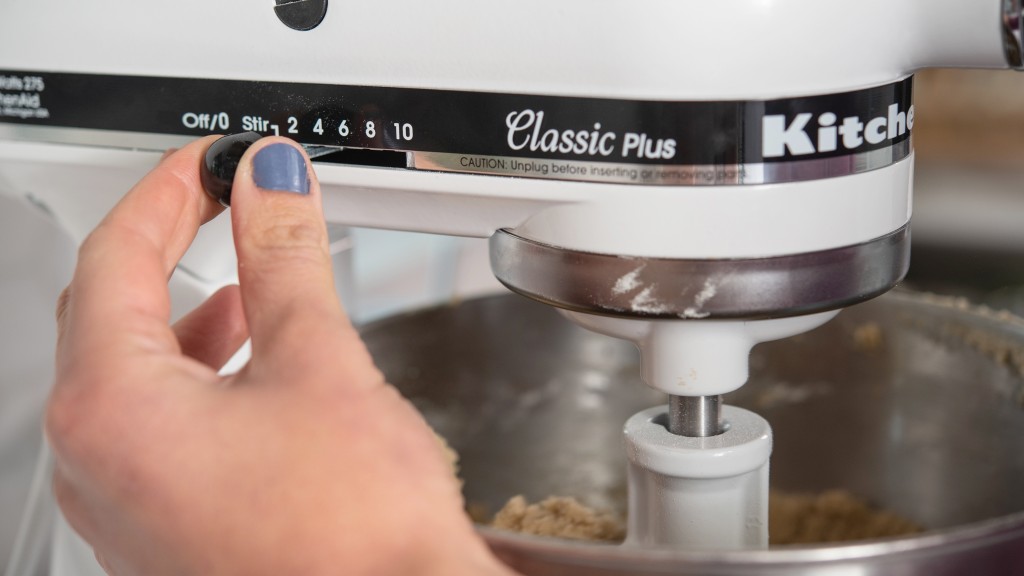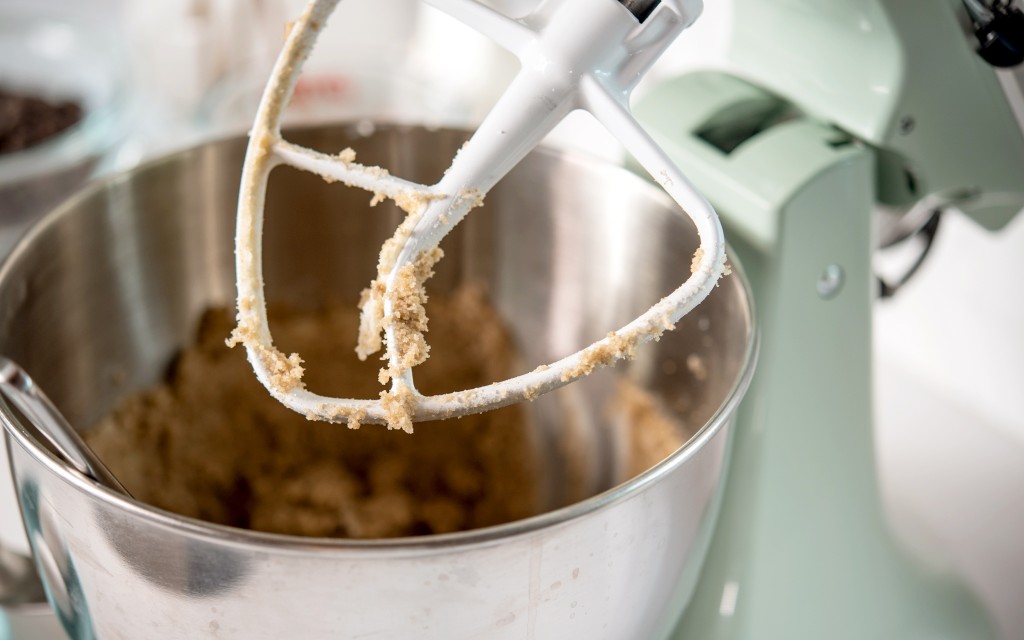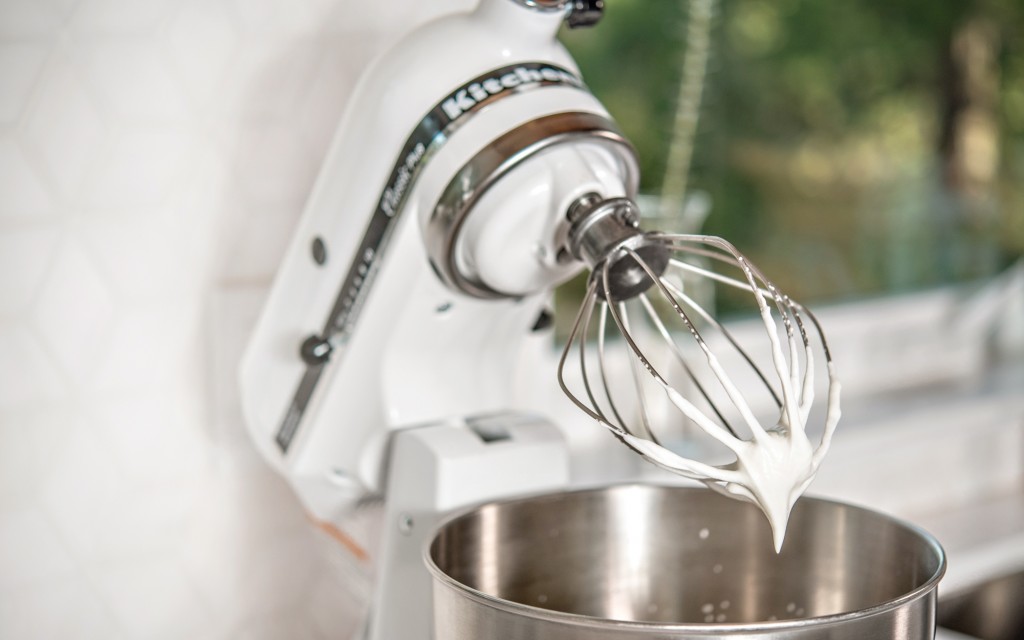To strip away the chaff and expose the best stand mixers, we researched over 25 of the top models on the market. We analyzed the manufacturers' marketing claims, product features, and specifications. With a comprehensive understanding of the market, we tempered the manufacturers' descriptions with individual consumer reviews. By these means, we narrowed the field down to 10 models that cover a wide range of styles for in-house, comparative testing. To evaluate all aspects of a stand mixer's performance, we created a set of test metrics, and each holds a different weight contribution to a product's overall performance. These metrics and their percent contribution of the total product score are: ease of use (30%), mixing (30%), whipping (25%), and kneading (15%). For a detailed description of how the products reviewed fared in each of these evaluations, check out our stand mixer review. If you agree, we think a top-performing stand mixer is worthy of joining the other kitchen appliances in your home.
Ease of Use
Throughout our testing regiment, the stand mixers were used and cleaned many times. Therefore, the deficiencies in the user interface, the moving parts, and the features affecting clean-up become apparent. If a cook only has knowledge of one of these machines, they may assume that the deficiencies they tolerate might not have been resolved with mixers in general. This is not the case, and it is the primary reason the ease of use metric is weighted as heavily as mixing.
A lot of factors contribute to this metric, so let's break them up into the two primary subcategories: ease of use and cleanliness. The ease of use metric evaluates the user interface and how the user interacts with the machine. Specifically, we look at the range of speed settings and how the appliance responds to doing work at those speeds. Does the stand mixer stay put on the countertop, or does it vibrate enough to walk around?
Additionally, we look at how the bowl is locked into and released from the mixer. Is this process smooth and easy or a pain in the tuchus? Does the bowl rattle or come loose? We apply this level of scrutiny to all of the stand mixers' moving parts.
We also look at the limitations of these machines, where the user may have to make up for the machine's shortcomings. For example, is there a paddle/bowl gap that requires the operator to use a spatula to push the contents back down for incorporation? Is there a timer, or will that have to be done manually? Finally, we investigate whether the machine has a failsafe to prevent damage to the motor and other hard-to-replace componentry if it becomes overstressed.Inevitably there is some crossover between the ease of use and cleanliness sub metrics. For example, incorporating a splash/pour guard covering the bowl will likely improve ease of use and increase cleanliness. Our evaluation includes other less obvious features such as slow-start speed that limits dry ingredients from being thrown around. Finally, we rate how easy it is to clean the bowl, stand, and attachments.
Mixing
For many, ingredient mixing is the primary reason a stand mixer will earn precious space in your kitchen. Let's face it, mixing with a whisk is demanding on human muscles because it requires a continual, forceful, circular motion, much like an exercise — and one that gives us a flashback to the "Wax on, wax off" scene from 1984 blockbuster The Karate Kid. For similar reasons, mixing is challenging on the machine's gears, motors, and attachments, the main parts assuming the work. Considering the demands and the wide breadth of tasks falling under mixing, we gave this test metric significant weight in a product's overall score.
To test these stand mixers' ability to mix, we isolated steps in several recipes, each demanding in their own way. We began with a cowboy cookie recipe, which presents a challenge for these machines because the cookie dough is inundated with dense ingredients such as chocolate chips, oats, nuts, and coconut flakes that stiffen the mixture. The fastidious baker wants an even distribution of goodies throughout the dough or batter, and this requires a balance of force and slow speed as one doesn't want to beat up the ingredients in the process.
To this point, we picked the most difficult ingredients to mix into our dough and then monitored each machine's performance. We look and listen for signs of motors laboring. Does the paddle slow, become jerky, or stop altogether? Does the noise of the motor increase in pitch and volume? Once the added ingredients are incorporated into the dough, we evaluate how impactful the process was on the ingredients and, in particular, the chocolate chips. Finally, we rate the distribution of these ingredients.
Next, we mix the wet and dry ingredients of a basic pizza dough recipe. Interestingly, this recipe calls for the mixing portion of the operation to be accomplished with the dough hook — a challenging prospect, to be sure. Yet, it did demonstrate the strengths and weaknesses of this attachment and the mixing action of the machines.Finally, we mix a basic buttercream frosting comprised of butter, cream, powdered sugar, almond extract, and vanilla extract. This simple recipe is a measure of the attachment and the mixing action. We considered how much user involvement is required to scrape the sides of the bowl and how well the ingredients are incorporated to produce the desired smooth, creamy outcome.
Whipping
Our stand mixer reviews would be remiss if they only comprised mixing and ease of use assessments. While the previous two metrics cover a lot of ground and do much to establish the quality of the machines in question, they are in no way comprehensive. Accordingly, the evaluations siloed within the whipping metric address typical mixer uses, though mechanically less demanding.
For the whipping evaluation, we use a particularly delicious lemon chiffon layer recipe. We selected this cake because it is delicate enough that outcomes are improved by using a high-quality mixer, but not so much as to need a professional baker's deft touch. We also whipped cream for good measure.
This metric's namesake tests are relatively straightforward and are easy to quantify. For example, by recording the time it takes to achieve stiff peaks from a half cup of cream and then measuring the increase in volume resulting from the aeration, we have a precise measure of a given mixer's small-batch whipping effectiveness. Likewise, we estimate the whipping effectiveness of the mixers by whipping egg whites with cream of tartar and sugar as called for in our cake recipe. We then bake off the sponge and, once cool, measure its thickness at the center and the edge. The amount that the cake rises correlates with how well the eggs were aerated, as the air trapped in the medium makes the cake rise (as opposed to yeast or baking soda). Thus, the measurement of the cooled cake is a good yardstick for a mixer's whipping performance.
Kneading
For many, standing mixers are all about making bread dough. And why not? Kneading is another task that requires a fair amount of muscle, and a machine more effectively does that. We used a basic pizza dough recipe that provided the opportunity to test the dough hook attachment. While this test is not as easily quantifiable as the whipping metric, the keen eye of an experienced baker can easily evaluate the outcomes. We are looking to see if the hook thoroughly incorporates the ingredients and, more subtly, whether the dough is stiff from being overworked or nice and elastic as is desired. Finally, while the hook is working the dough, we take note of the stand mixer's response to the load. Much like the mixing metric, we are listening for changes in the motor's pitch and smoothness in the kneading action.
Conclusion
We hope this discussion of our comparative testing methods has been informative and beneficial to help you determine the best stand mixer to add to your arsenal of kitchen appliances. There is no substitute for having the products in hand and putting them in demanding scenarios to evaluate their quality and functionality. If you found this article informative but still need help navigating a mixer purchase, checkout out our step-by-step stand mixer buying advice and our comprehensive stand mixer review articles.





